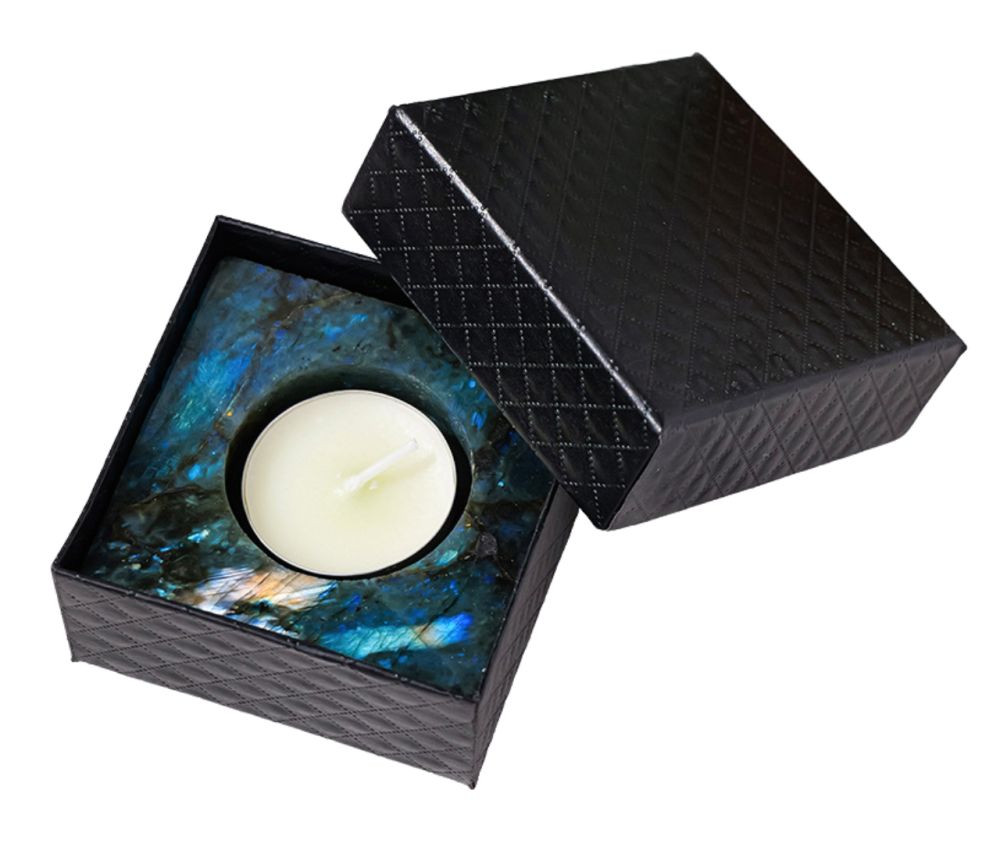We use cookies to make your experience better.
TimmersGems has a new website, existing customers also need to register again.
Labradorite tealight holder in beautiful gift box. 6.5x6.5x4 cm and for normal tealight of 40 mm.
Fantastic gift set of gemstone candlestick with very beautiful gift box. Made of good quality gemstone and a pleasure to give, and certainly also to receive.
Availability:
In stock
SKU
122355
The mineral labradorite is a calcium-sodium-aluminum-tectosilicate with the chemical formula (Ca,Na)(Si,Al)4O8. It belongs to the feldspars. The colorless, white, gray or light green labradorite has a glass luster, a white stripe color, a perfect cleavage according to crystal plane [001] and a good according to [010]. The average density is 2.69 and the hardness is 7. The crystal system is triclinic and the mineral is neither radioactive nor magnetic. The characteristic play of colours, called labradorite, is caused by the refraction of light on microscopic crystals of various dark minerals, which lie on the cleavage planes. Labradorite usually occurs shapeless or granular; the mineral rarely or never forms crystals. Labradorite is undoubtedly the best known of the precious and ornamental stones that show such a play of colours. When the stone is cut judiciously, the play of colours comes into its own even better. But the beautiful labradorite can also often be seen on the rough pieces. There are few minerals that change colour as strongly as labradorite. The name of the mineral labradorite is derived from the Labrador Peninsula in Canada, where it was first described. The stone was discovered in 1780 on the east coast of the Labrador Peninsula by a priest and named after the island by him. He found a large number of boulders with a striking grey colour that changed colour into dark blue and green nuances when turned. This discovery aroused great interest among scientists at the time and it was determined that this was a soda lime feldspar or plagioclase. Labradorite is a common feldspar in metamorphic and igneous rocks such as pegmatite. It is part of the plagioclase series (albite-anorthite). The type locality of labradorite is on the Canadian Labrador Peninsula. Deposits are also found in Australia, Madagascar, Mexico, Russia, the United States and Finland.
| Dimensions | 6,5x6,5x4 cm |
|---|---|
| Country of Manufacture | China |












